Description
Responsive Communication is a ground breaking book which has been put together by a team of authors led by Phoebe Caldwell, who during her long-time practice in this field has found some unique paths to achieving deep and meaningful engagement with autistic people and people with profound and multiple learning disabilities. The book explains how to communicate with children and adults who are struggling to understand and articulate speech using Responsive Communication. Responsive Communication combines intensive interaction (using people’s body language to communicate) with attention to sensory issues, to encourage effective emotional engagement and reduce behavioural distress.
The authors offer a range of fascinating and informative perspectives on the approach and application of responsive communication, from backgrounds including expert by experience, communication, service management, occupational therapy, neuroscience and psychiatry. What this range of contributors has in common is a sense that before we can address communication, we need to attend to the sensory features of autism and reduce the information processing distress that may be hindering our ability to get in touch with our autistic partners.
Read a sample of Responsive Communication with foreword by Prof Sheila the Baroness Hollins
Download ecopy (UK customers)
Download ecopy (Worldwide customers)
Audience
Responsive Communication will benefit support staff, professionals and family members supporting autistic adults and children and people with profound and multiple learning disabilities.
Authors
Phoebe Caldwell DSc
For over thirty years, Phoebe Caldwell DSc has pioneered the development of communication support for individuals on the autistic spectrum, opening up channels of communication and emotional engagement for thousands of individuals across the UK whose previous experience had been social and emotional isolation.
Phoebe’s way of working is distinctive in that it is rooted in respect for the identity of the individual as they are. The Caldwell Foundation uses the term Responsive Communication to describe Phoebe’s approach to communication support.
At the heart of Phoebe’s work is her one-to-one work with individuals on the autistic spectrum who find communication difficult. When Phoebe provides this one-to-one support, family and care-givers are there observing so that they can learn the approach and use it themselves with the individual. In this way, Responsive Communication is used as a continuous communication tool so that the individual always has a meaningful point of reference.
Phoebe is employed by the NHS and local authorities to work with difficult-to-provide-for individuals. As part of this, she trains professionals, therapists, managers, practitioners, parents and carer-givers.
Elspeth Bradley PhD, FRCPC, FRCPsych
Elspeth Bradley, researcher, psychiatrist and psychotherapist, has supported children and adults with intellectual disabilities and autism over the past 35 years in the UK and in Canada.
She has held tenured clinical academic appointments in intellectual disability psychiatry in both countries: in the UK as Senior Lecturer at St Georges Hospital Medical School, NHS Consultant Normansfield, Richmond and Twickenham and Lead Consultant in Intellectual Disabilities, Cornwall Partnership NHS Trust; and in Canada as Psychiatrist-in-Chief and Post Graduate Education Coordinator in Intellectual Disabilities at Surrey Place Centre/Department of Psychiatry, University of Toronto.
Janet Gurney
Janet Gurney is Director of Training for ‘Us in a Bus,’ a voluntary organisation that uses social interaction to build relationships with people with profound learning difficulties and complex needs including autism and challenging/distressed behaviour. Janet has been using Intensive Interaction in this work for over 25 years, and has had the privilege of working alongside Phoebe Caldwell.
Janet uses her experience, perception and sensitivity to establish common ground with people who are often isolated, helping them to have more of a positive voice and an impact on their world. She has a post-graduate certificate in training and is skilled at adapting her training approach to meet the needs of participants.
Jennifer Heath
Jennifer Heath qualified with an MSc in occupational therapy in 2010. She works as an Occupational Therapist at Underley Garden where she is also a manager for the health and therapy team there. Underley Garden is a school and children’s home for children and young people with a range of complex needs, including autism. Underley Garden is based in Kirkby Lonsdale, on the border of Cumbria and Lancashire. Jennifer is also a Sensory Integration Practitioner, currently in training to the advanced level.
Hope Lightowler
Hope is 20 years old and was 17 when she was sectioned. Hope shares her account of the difficult and traumatic process of being discharged. A couple of months after discharge she was diagnosed with high functioning autism.
Kate Richardson
Kate Richardson is a highly specialist learning disability Speech and Language Therapist. She works part-time in the NHS supporting adults with a learning disability and has co-authored several teaching and learning publications on communication and learning disabilities. Kate is a founding director of Autism Wellbeing CIC, a not-for-profit social enterprise which provides a range of services to the autistic community.
Jemma Swales
After completing a degree in psychology, Jemma worked at a day centre for autistic adults with learning disabilities in London. She now works as a self-employed autism practitioner and is one of the directors of Autus Cumbria Ltd, a small not-for-profit organisation. Her work includes offering long term support for autistic people and their families, running activity sessions for young people and delivering a range of training. Much of her experience involves supporting people with complex behavioural needs and finding and implementing practical ways forward.
Details
ISBN: 9781912755363
Publication date: 17th June 2019
Foreword
Professor Sheila the Baroness Hollins
Introduction
Chapter 1: Attention to sensory issues: hyper- and hypo-sensitivities
Phoebe Caldwell
Chapter 2: Unrecognised autism
Hope Lightowler
Chapter 3: Us in a Bus and Intensive Interaction Janet Gurney
Chapter 4: Addressing sensory issues and body language with autistic people: Responsive Communication from an occupational therapy perspective
Jennifer Heath
Chapter 5: Autism support in Cumbria: understanding behaviour and supporting change
Jemma Swales
Chapter 6: A one year Responsive Communication pilot project in Carmarthenshire
Kate Richardson
Chapter: 7: A psychiatrist’s perspective on Responsive Communication
Dr Elspeth Bradley

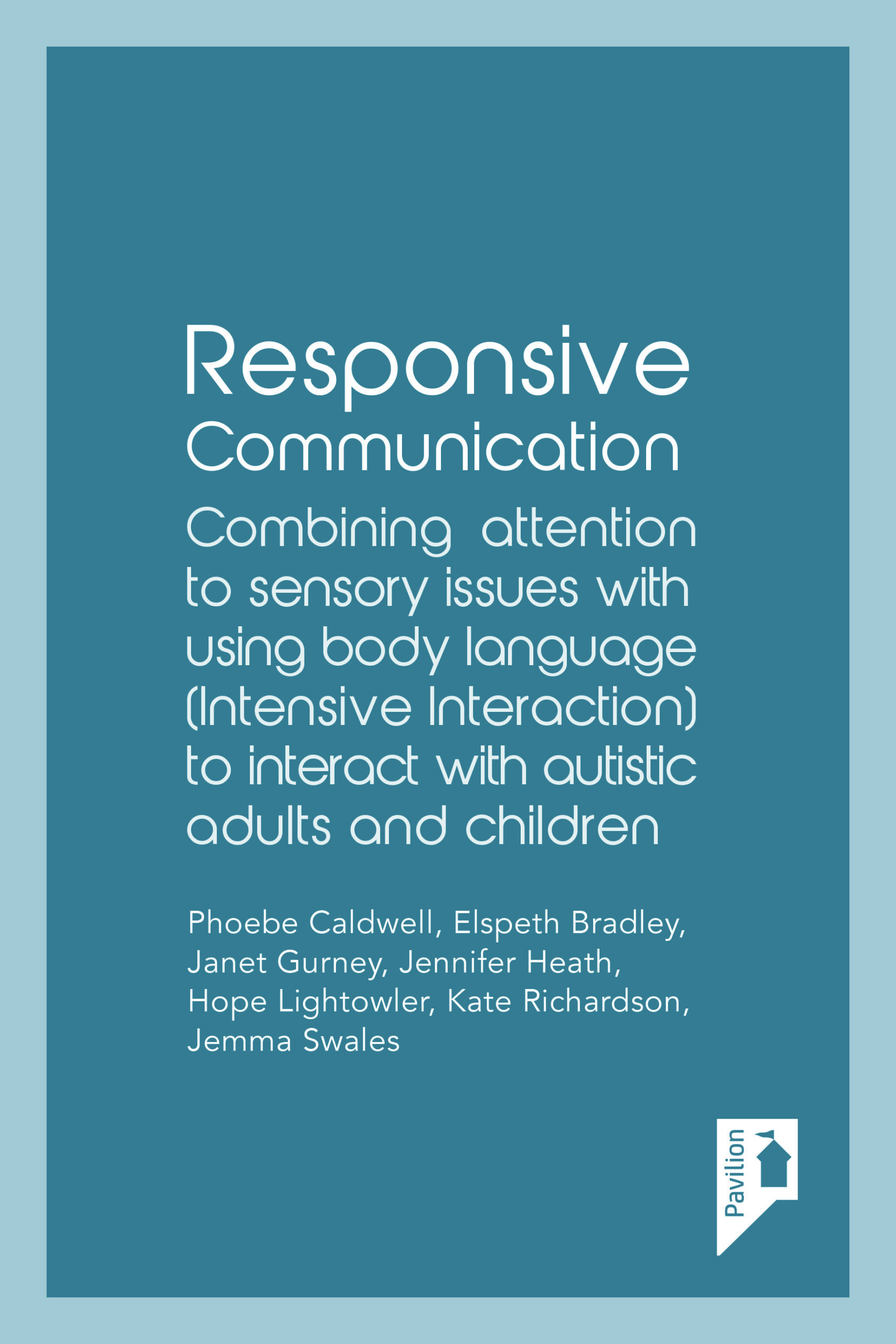
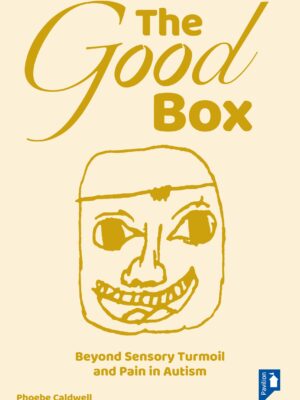
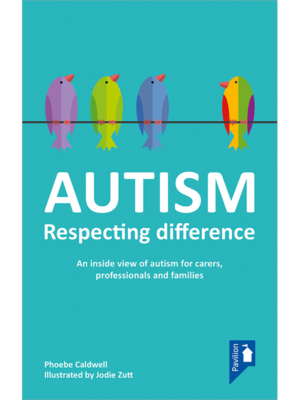
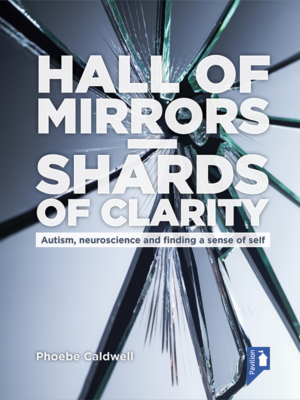

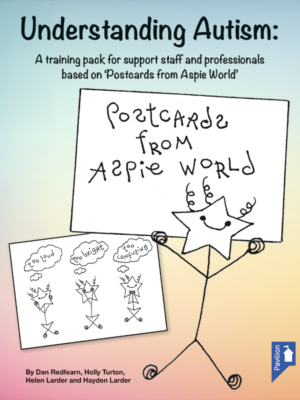
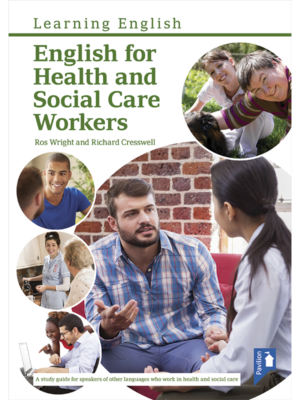

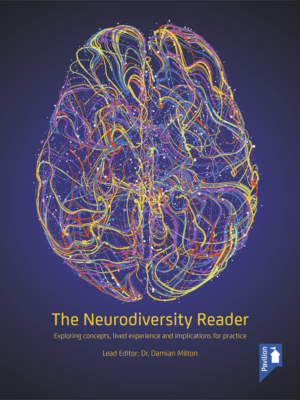
Simon Jarrett, Editor, Community Living, Vol 33 No 3 | Spring 2020 –
This highly readable and helpful collection introduces and examines the concept of responsive communication, and presents real-life stories showing it in action.
In 2001, academic Melanie Nind and Dave Hewett, now director of the Intensive Interactive Institution, relaunched Geraint Ephraim’s 1980s concept of “augmented mothering” as “intensive interaction”.
Since then, it has been used widely and successfully to tune in to the feelings and expressive capacities of children and adults through their body language and other non-verbal communication.
It has proved particularly effective as a form of communication and interaction with people with the most profound disabilities and, more recently, people with autism. One of its primary effects is to reduce anxiety arising from interaction.
Responsive communication seeks to build on the work of intensive interaction by paying attention to sensory issues. Like intensive interaction, it focuses on body language and non-verbal articulation, but also pays particular attention to supporting an environment for the individual that minimises the impact of sensory concerns.
These concerns are wide ranging, and can include visual and auditory processing issues, emotional overload, reactions to smell and taste, and both over- and undersensitivity to feelings. Oversensitivity can manifest in reactions to footwear and clothes, while undersensitivity can be expressed through people applying violent physical stimuli to themselves.
The book explores various strategies to enable people to reduce or alleviate the disabling impact of sensory issues on their lives and their relations with others. These strategies need imagination, flexibility and empathy because, as intensive interaction practitioner Phoebe Caldwell observes, if people judge the sensory experiences of those with autism and profound disability by their own reactions, it can lead only to total misunderstanding.
This eclectic collection, from Caldwell’s detailed introductory overview to Hope Lightowler’s shocking account of the overwhelming sensory environment of the hospital in which she was detained, allow us to gain numerous perspectives. Much of the focus is on autism, but Janet Gurney of Us in a Bus covers interactions with people with profound disabilities.
Becky Loney, PMLD Link –
There are an immeasurable number of fascinating insights in Phoebe Caldwell’s latest book ‘Responsive Communication’ but most welcome to me is the authenticity with which Phoebe writes, and the depth of expertise she and the other six contributing authors offer. There’s no show, no flashing lights or pound-shop plastic from the all-singing, all-dancing sensory bandwagon. This book is above all about the person, and looks at the intrinsic link between their communication and sensory needs. It couldn’t be more person-centred or more thoughtfully explained. The book focuses on responsive communication for people with autism, but the approach is relevant to many people with profound and multiple learning disabilities, who will also experience sensory processing issues and communication barriers.
I first came across Phoebe Caldwell’s work in the 1990’s when I was lucky enough to work in a stimulating – and better funded – social care environment. My first job supporting people with profound and multiple learning disabilities, and I was trained to within an inch of my life in sensory integration and intensive interaction. So, I grew up with the work of Hewett and Nind, and then Phoebe Caldwell, and have practiced, studied and talked about intensive interaction for the past 25 years. I am drawn to Phoebe’s writing because of the simplicity of her approach – it always come back to the person.
I’ve read Phoebe’s own first chapter at least three times in the past few months, each time absorbing a little more. This weighty first chapter explores responsive communication, and how it combines intensive interaction – the use of body language to support communication – with attention to sensory issues: the aim being to reduce distress and to support connections and emotional engagement. Phoebe explains in relatively simple terms some of the neuroscience behind the ‘immobilisation’ or sensory overload that many autistic people experience when being threatened by levels of incoming stimuli. Phoebe stresses the need to listen and learn from people with autism, and how responsive communication can ‘bring about remarkable change to the lives of people who are struggling to make sense of their environment’.
The six contributing authors all offer a different perspective in subsequent chapters: Hope Lightfowler’s harrowing first-hand account of her experiences as teenager, takes us through her agonising wait for an autism diagnosis, and the pain she endured as an inpatient, where her visual stress and sensory needs went unrecognised and unmet. The lived experience Hope describes is brutal and gruelling, and should be an essential read for any commissioner or professional involved in Transforming Care or provision of Assessment and Treatment Units.
Janet Gurney, a regular contributor to PMLD Link, illustrates the work of Us in a Bus, a unique charity which practices and shares the use of intensive interaction with an understanding of sensory processing issues. Janet guides us through three people’s responsive communication sessions, with captivating and often touching descriptions of how these have evolved, led by the person, supported by the practitioners.
Jemma Swales (autism practitioner) explains her personal journey supporting people with autism in Cumbria, people who have been able to describe the trauma associated with their experience of the world. Jennifer Heath (occupational therapist) describes her work in a school and children’s home setting, with a detailed analysis of sensory processing and integration work with a young woman called Sophie. Kate Richardson (speech and language therapist) recounts her work on a co-produced project with families that aims to take an ‘autism from the inside-out’ stance and Elspeth Bradley (psychotherapist and psychiatrist), considers the benefits of responsive communication from a psychiatry perspective, recognising that it could bring ‘much needed emotional attunement and understanding’ and is a tool that could be invaluable in the psychiatric assessment process.
Responsive Communication might feel initially daunting because of its dense layout. The font and tightly packed pages are a challenge and will be off-putting to some readers: in fact my dyslexic daughter and husband both said they would not be able to read the book because of the font and layout, so if a second edition is possible I hope the publishers can give some further thought to accessibility.
It is undoubtedly a solid book but I would highly recommend perseverance. For me it is a book to pick up and soak in over time, taking small chunks on a bus or train, or with a spare hour over a cup of tea. I’ve read it all, some chapters 2 or 3 times, but I need to go back and mull over the depth and breadth of the experience offered, brought together by Phoebe’s wisdom, and authenticated by the lived experience of Hope. The book combines personal stories with science and clinical practice, and gives so much food for thought to a subject that to my mind, can only make sense: because it starts and ends with the person, valuing them exactly as they are.
Judith Ann Cookson, Independent Specialist Occupational Therapist –
This book has been put together by a team of authors with a focus on communication, sensory issues and the use of intensive interaction with children and adults diagnosed with an autistic spectrum condition. Each chapter is complied by a different author and provides a slightly different perspective on the subject. It begins by looking at levels of sensory responsiveness and this is followed by clinical applications of communication strategies and occupational therapy sensory interventions. There is also a psychiatrists perspective on responsive communication which highlights the fundamentals of responsive communication: the use of body language/non-verbal articulations, attention to sensory issues and supporting an environment that reduces the negative impact of any sensory concerns. The book provides multiple examples of managing sensory processing issues, responsive/interactive communication techniques and clearly highlights applications in day to day clinical/educational practice. The text is on the small size for a really comfortable read and the book tends to be “over wordy” in places. However, it does provide invaluable insights into the interplay between intensive interaction and sensory processing issues. A great read for anyone wanting to understand interactions and sensory processing with children and adults diagnosed with an autistic spectrum condition.
Becky Lyddon, Sensory Spectacle Founder –
“Understanding the underlying triggers to behaviours we observe in adults and children with SEND (Special Educational Needs and Disability) is so important in order for us to build relationships and personalise the support we provide. This book is a must-read for anyone supporting autistic adults & children.
Phoebe Caldwell has again published a book with exceptional insight and knowledge into the ways in which we can do this for people with profound needs.
The book delves into depth when considering supporting autistic people, reminding us that everyone is unique and therefore the way we support people will be very different from another person. To explain this, the book gives insight from a range of professionals who provide relevant information for you to understand why we may observe some of the behaviours that we do. This covers perspectives from professionals in the field of biology, service management, speech therapy, occupational therapy and psychiatry as well as Caldwell’s extentsive knowledge and experience relating to Autism. I found that having this rich professional content clarified everything I was reading.
The book is full with real life examples whether it’s through the work Caldwell has done or from explanations and insights shared from people with these specific needs, this really helps to ground the content and open up our ability to relate the information mentioned to the diverse range of needs that we may support in our jobs on a daily basis. There are success stories from people who have received support for their sensory difficulties and how they can now do things they previously found challenging.
Alongside these insights and explanations as to why we may see certain behaviours, Caldwell offers tips and knowledge on how we can adapt our environments to meet specific needs better. If you’re in an education or care setting this is so important to consider.
Whether you are new to working with people with SEND or you have years of experience there is still plenty you will gain from this book. Sensory processing is unique to us all and it is so important that we accurately understand the sensory issues for the people we support.”
Reza Kiani, Consultant in Adult Learning Disability Psychiatry, Rachel Sinclair, Occupational Therapist and Kathryn Dixon, Occupational Therapist –
As two Occupational Therapists (OTs) and a Psychiatrist working within an Adult Learning Disability Service in Leicestershire, we are always striving to broaden our knowledge within the areas of sensory processing issues and intensive interaction. Our team receives a high percentage of referrals which ask us to explore the impact of both sensory and communication issues within people’s everyday lives. We hoped that this book would give us fresh eyes to consider these referrals with and provide new ideas to enhance our clinical understanding and approaches -this book did these in abundance.
Chapter 1: Attention to sensory issues: hyper and hypo sensitivities
Phoebe Caldwell presents a compelling overview of different sensory issues that people with Autism Spectrum Disorder (ASD) may struggle with. The chapter is brought vividly to life with distinct accounts of people’s experiences relating to each sensory difficulty and explores the theory that underpins this. Throughout this chapter are insightful nuggets of information on how to identify triggers within each sensory issue and how to help avoid or minimise the impact of these and in turn reduce sensory overload and the stress, anxiety and pain that this can cause.
Chapter 2: Unrecognised autism
Hope Lightowler gives a raw and eye opening account of her diagnostic journey. It is so interesting, but at times heart wrenching, to read how Hope had to navigate anxiety, stress and sensory overload within everyday situations and during hospital admissions. Through getting her diagnosis this helped Hope to make sense of her sensory world and gave her strategies on how to manage this.
Chapter 3: Us in a bus and Intensive interaction
This chapter explores the use of intensive interaction and sensory processing. It is an interesting chapter due to having experience of supporting people to move into the community and the use of Intensive interaction and sensory therapy. It is positive that the care teams had supported and maintained the input. The case examples demonstrate the positive outcomes for each person and how this improved their self esteem, quality of life and independence
Chapter 4: Addressing sensory issues and body language with autistic people: Responsive Communication from an occupational therapy perspective
This chapter was very pertinent to our service. It was both informative and reassuring that the OT process our service is following is validated and evidenced. It assists inspiring and re-motivation and encouraging new ways of working with sensory issues presented by our client group.
The case example presented by Jennifer Heath of Sophie, a client with Cornelia de Lange Syndrome, gives an invaluable insight into the assessment and treatment of her difficulties. It is thought provoking due to a current referral we have received for a client with the same syndrome. This has provided valuable ideas/experiences (view point) to explore multidisciplinary interventions and not just input provided by the OTs.
Chapter 5: Autism support in Cumbria: understanding behaviour and supporting change
This chapter demonstrates the value of investing time with people. It gave clear examples of how, given the time, Jemma Swales was able to bring about changes that had a significant impact on the quality of peoples’ lives. In a time of justifying our interventions and giving set-time periods for treatment this shows an alternative way of working. This fits well with the literature highlighting the benefit of working with people with learning disability over a sustained period of time.
Chapter 6: A one year Responsive communication pilot project in Carmarthenshire
Anyone wanting a new approach to delivering services to families with children with ASD should read this chapter. It provides a positive differing perspective of a new service delivery model, which was family focussed that used a holistic approach rather than an impairment based approach. It also provides a valuable overview of new ways of working to provide services for children with ASD in the community. It offers practical ways to make the services more accessible and meaningful to the families and reduces stigma, isolation, feelings of helplessness for building confidence, feeling supported and positive family wellbeing.
Chapter 7: A psychiatrist’s perspective on responsive communication has been authored by Professor Elspeth Bradley who is an eminent Psychiatrist/Psychotherapist with specialist expertise in the assessment and management of psychiatric disorders in those with ASD and Intellectual and Developmental Disability. The chapter explores the three fundamentals of responsive communication within the context of a good clinical/psychiatric practice and offers advice on how to engage patients to optimise the therapeutic relation, with the final aim of improving treatment outcomes. This chapter also focuses in more details on ‘’meltdowns and shutdowns’’ and impressively reviews the relevant neurobiological basis and theories (e.g. polyvagal theory) that underlie these ASD-related reactions. Furthermore, it raises awareness on how to avoid misdiagnosing these with psychiatric disorders. The chapter also contains extremely useful information and practical tips on preventing ‘’meltdowns/shutdowns’’ and provides an excellent evidence based update on the emerging technology in preventing/managing these (e.g. mobile sensors, vagal nerve stimulation). In addition, judicious use of various medications and acoustic stimulation are discussed for the management of the above conditions. The readers can also benefit immensely from insightful accounts on the experience of trauma, assessment and diagnosis of psychiatric disorders in this vulnerable population and interesting case examples provided in summary boxes at the end of the chapter.
We would highly recommend this fascinating book for its invaluable insights, from differing perspectives, into the interplay between intensive interaction and sensory processing issues. It is indeed a must read for clinicians, commissioners of services, parents, carers and anyone who wishes to gain a greater understanding when interacting with adults and children with ASD.
Professor Sheila the Baroness Hollins –
“Phoebe Caldwell has found some unique paths to achieving deep and meaningful engagement with autistic people and people with profound and multiple learning disabilities. Families and carers are in awe of the deep and intuitive connections she is able to make, adapting her way of being with and responding to each person.
Through her practice of Intensive Interaction over several decades, Phoebe has illuminated the way in which sensory issues can impede communication and emotional engagement of autistic individuals with others. She has shown how both hypo- and hyper-sensitivities can contribute to a scrambled sensory input, and how subsequent anxiety results in either hyperarousal (sometimes seen as ‘meltdowns’) or hypo-arousal (sometimes seen as ‘shutdowns’). These sensory issues are often unrecognised by professionals, families and other observers, as they are not routinely part of the experience of those who do not have autism. When sensory triggers are not anticipated or recognised, distress may manifest as behaviours that challenge. The authors of this book share their different perspectives, while also all being practitioners of Responsive Communication.”
Professor Sheila the Baroness Hollins